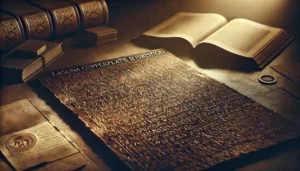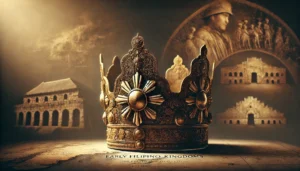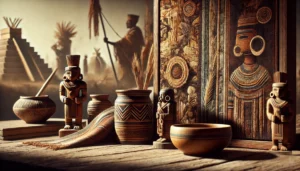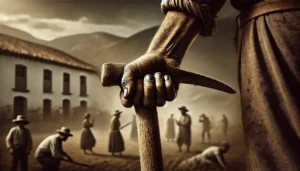
The Laguna Copperplate Inscription: Deciphering Ancient Filipino Writing
The Laguna Copperplate Inscription (LCI) stands as a pivotal artifact in Philippine history, shedding light on the archipelago’s pre-colonial past. Discovered in 1989 near the mouth of the Lumbang River in Laguna de Bay, this copper plate has revolutionized our understanding of early Filipino society, governance, and writing systems. Historical ContextThe LCI dates back to […]
Read More
Early Filipino Kingdoms: Exploring the Political Landscape Before Colonization
The Philippines, an archipelagic nation comprising over 7,000 islands, boasts a rich tapestry of history that predates colonial influence. Long before the arrival of Spanish conquistadors in the 16th century, the islands were home to diverse societies with complex political structures, vibrant cultures, and sophisticated economic systems. These early Filipino kingdoms, often referred to as […]
Read More
Indigenous Art and Culture: Expressions of Pre-Hispanic Life
The Philippines, an archipelago of over 7,000 islands, boasts a rich and diverse cultural heritage that predates colonial influence. Indigenous art and culture in the Philippines offer a fascinating glimpse into the pre-Hispanic life of the archipelago’s earliest inhabitants. These expressions of creativity and tradition have survived centuries of change, providing invaluable insights into the […]
Read More
The Emergence of Mestizo Culture: Blending Filipino and Spanish Traditions
The arrival of Spanish colonizers in the Philippines in 1565 marked the beginning of a significant cultural transformation that would shape the archipelago for centuries to come. Spanish rule in the Philippines lasted for more than three centuries, from 1565 to 1898. During this period, the interaction between the indigenous Filipino population and the Spanish […]
Read More
The Role of the Catholic Church in Colonial Philippines: A Comprehensive Analysis
The Catholic Church’s influence in the Philippines began with the arrival of Spanish colonizers in the 16th century. The Spanish expedition of 1521 led by Ferdinand Magellan marked the first introduction of Catholicism to the archipelago. This initial contact, though brief, set the stage for the subsequent colonization and widespread Christianization of the Philippines. In […]
Read More
The Impact of Islam on Pre-Colonial Philippine Societies
The arrival of Islam in the Philippine archipelago marked a significant turning point in the region’s history, profoundly shaping the cultural, political, and social landscape of pre-colonial societies. Muslim traders and missionaries from Arabia, Persia, and other parts of Southeast Asia began arriving in the southern Philippines as early as the 13th century. These early […]
Read More
The Influence of Catholicism on Philippine Culture and Society
The arrival of Catholicism in the Philippines marked a pivotal moment in the nation’s history, shaping its cultural landscape for centuries to come. Spanish colonization and religious conversion began in 1521 with the landing of Ferdinand Magellan on the island of Cebu. This event initiated a period of profound transformation for the indigenous peoples of […]
Read More
The Polo y Servicio: Forced Labor and Social Unrest in Philippine History
The Polo y Servicio was a labor system implemented during the Spanish colonial period in the Philippines. This system, which lasted from the 16th to the 19th century, required Filipino men aged 16 to 60 to render forced labor for various public works projects. The term “polo” referred to the personal service, while “servicio” denoted […]
Read More
The Rise of the New People’s Army (NPA): Communist Insurgency in the Philippines
The New People’s Army (NPA), the armed wing of the Communist Party of the Philippines (CPP), emerged during a tumultuous period in Philippine history. The late 1960s saw widespread social unrest, economic inequality, and political repression under the administration of Ferdinand Marcos. These conditions provided fertile ground for revolutionary ideologies to take root among the […]
Read More
The Americanization of Education: Curriculum and Cultural Influence in the Philippines
The American colonial period in the Philippines, which began in 1898 following the Spanish-American War, marked a significant turning point in the country’s educational landscape. This era introduced a new system of education that would profoundly shape Filipino society for generations to come. The United States, having acquired the Philippines from Spain, embarked on an […]
Read More